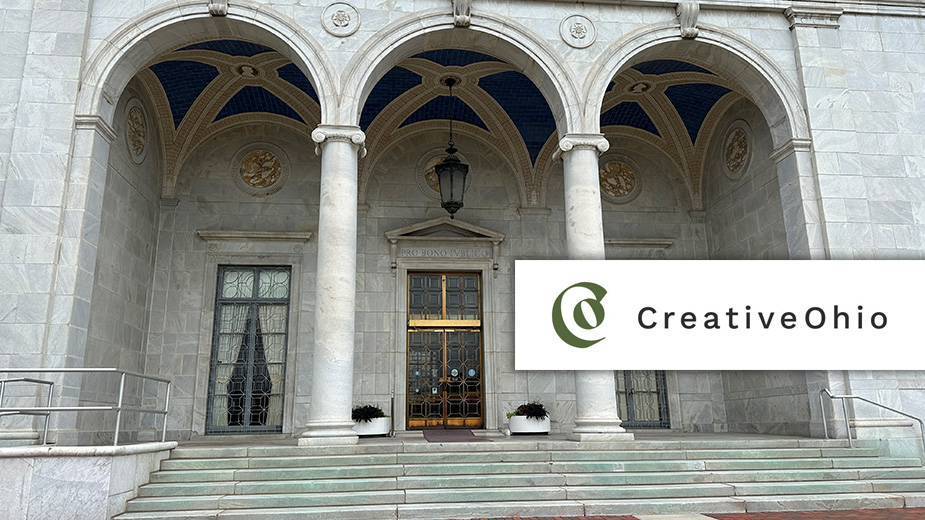YOUNGSTOWN, Ohio – A study being commissioned by a statewide advocacy group will gauge the recovery of the region’s arts industry in the wake of the pandemic.
The study, which is due by the end of the year, will measure the economic contribution of the arts industry in Ohio, with breakdowns for each of its eight regions. It was commissioned by Creative Ohio, a Columbus-based nonprofit lobbying group that primarily seeks to increase state funding for the arts.
“It will be an accurate depiction of the economic impact of the industry for 2022 and 2023, so we can understand where it sits related to previous years, and determine the trajectory we are on,” says Michael McGiffin, who is a Creative Ohio board member. McGiffin, of the Youngstown area, is also vice president of engagement and investor relations of the newly formed Lake to River district of JobsOhio. Lake to River, however, is not involved with the Creative Ohio study.
McGiffin would not hazard a guess as to what the study may find. “They usually surprise me,” he says.
The primary purpose of Creative Ohio is “to make sure the state is spending money on art,” he says, adding the group is also a thought leader in areas such as drafting or changing legislation that affects funding of the creative sector.
The Covid-19 pandemic hit the arts and entertainment industry harder than any other sector.
Theaters, arenas and other performance venues were the first to be shut down in 2020 – the height of the pandemic – and the last to reopen.
Their reopenings usually came with limits on capacity as well as lingering fears by consumers that further hindered ticket sales.
A study released by Creative Ohio in 2022, for the years 2019 and 2020, showed the drastic decline in jobs, payroll and economic output of the arts sector.
The upcoming study will provide an updated snapshot of the recovery effort.
While it’s too soon to predict what the 2022-23 study will find, it’s likely to show that the comeback has been strong, but the numbers have not reached prepandemic levels.
PREVIOUS STUDY
The study for 2019-20 revealed the toll the pandemic took on the arts and entertainment industry, including theaters and live music venues, in Ohio in general and Youngstown in particular.
“Coming out of Covid, we did a statewide economic impact study of the creative sector, broke it down by region to show the strain that the pandemic put on the arts industry,” McGiffin says. “Now we’re looking to [follow up] that study with ‘what does the arts industry look like now.’ It will be a state-of-the-industry report on the economic impact of the arts sector.”
The coming study will also be broken down by the eight regions of Ohio: Akron, Canton, Cincinnati, Cleveland, Columbus, Dayton, Toledo and Youngstown
The 2019-20 study yielded the following key points:
• Before the pandemic, Ohio’s creative sector supported over 329,000 jobs, with $18 billion in payroll and $55 billion in economic output.
• The pandemic had a severe negative effect on the creative industry in Ohio. Between 2019 and 2020, employment in the industry declined by over 41,000 (a decline of 12.63%), while total creative industry economic output declined by over $8.6 billion (a 15.74% drop).
• The pandemic disproportionately affected the creative industry in Ohio, as compared to all industries. Decreases (as a percentage) in employment and economic output were four times as large compared to the overall Ohio economy.
• The decline in the creative industry payroll was over seven times as large as the decline in the state’s overall economy, suggesting programs such as the Payroll Protection Program did not provide adequate support to employees in creative fields.
The pandemic hit the Youngstown arts sector harder than the state average, the 2019-20 study showed.
For example:
• Youngstown arts employment declined by 17.12% (statewide, there was a decline of 12.63%).
• Youngstown arts payroll declined by 13.36% (statewide, there was a decline of 7.28%).
• Youngstown arts sector economic output declined by 21.69% (statewide, there was a decline of 15.74%).
In dollar amounts, the economic contribution of the creative sector in Youngstown between 2019 and 2020 showed the following declines:
• Total economic impact: $1.046 billion to $819.5 million
• Payroll: $290.7 million to $251.8 million.
Creative industry employment in the Youngstown region fell from 8,108 in 2019 to 6,720 in 2020, the study found.
THE BUTLER
The Butler Institute of American Art is the Youngstown area’s premier cultural venue. Its status in the visual arts world is respected nationwide.
Attendance at the museum has been steadily climbing in recent years but it has not yet reached its prepandemic level, says Rebecca Davis, development director of The Butler.
“The Butler is doing fairly well relative to what’s going on in the rest of the arts industry,” Davis says. Attendance for the most recent fiscal year was 62,000, which represents an uptick but far short of the prepandemic average yearly attendance of 80,000.
There are other signs of the museum’s comeback.
“Our programs are well attended, and school tours and art classes are back to normal,” says Davis, who is also the president of Power of the Arts, an advocacy group for arts organizations in Mahoning and Trumbull counties.
Formed in 2009, Power of the Arts fosters collaboration among local arts groups so that they can participate in the region’s economic revitalization. One of its goals is to secure public funding for arts groups.
Power of the Arts has been working with Loop Youngstown, which is attempting to purchase a building that it plans to convert into artist studios, gallery space and classrooms.
Power of the Arts is also in the process of merging with the Cultural Alliance, a similar Valley arts advocacy and collaboration group.
Formed in 2021, Cultural Alliance’s members are Ballet Western Reserve, The Butler Institute of American Art, JAC Management Group, Youngstown Playhouse and Youngstown State University.
